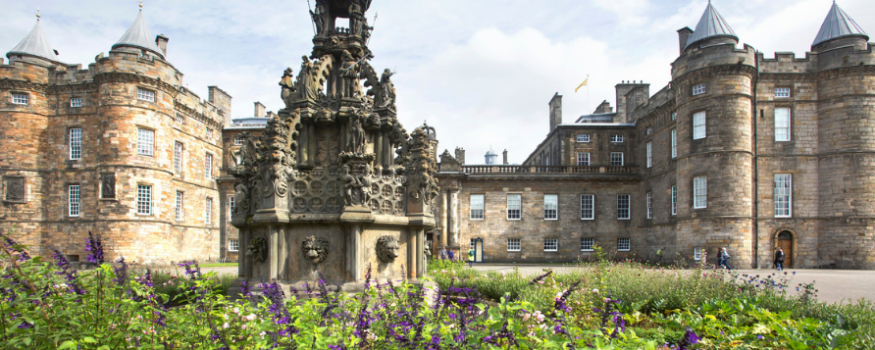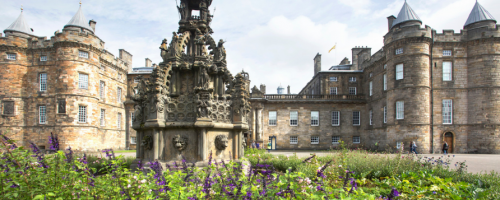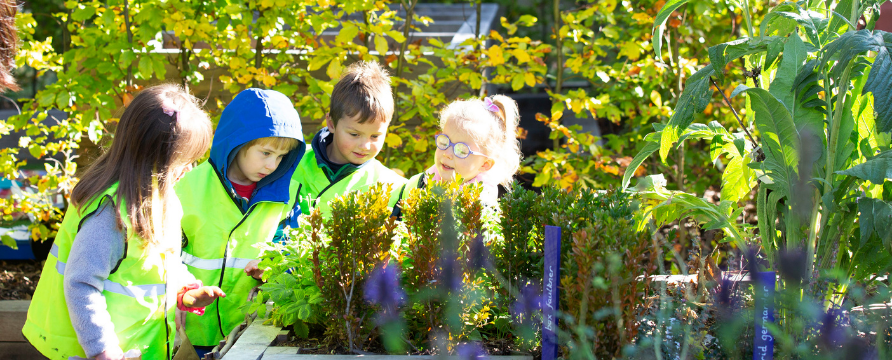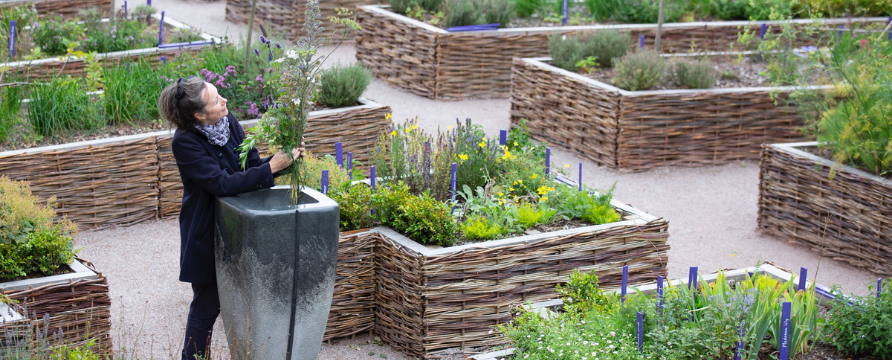Royal Collection Trust have opened a new public garden at the Palace of Holyroodhouse, the Queen’s official residence in Scotland.
Situated on Abbey Strand, the garden can be freely enjoyed year round by the people of Edinburgh and visitors to the Palace, with seasonal planting inspired by some of the earliest recorded gardens on the site. Adjacent to the new Abbey Strand Learning Centre, it will also be used by school and community groups to explore how plants have been used to improve health and wellbeing.
Both the garden and the Learning Centre have been created as part of Future Programme, a major programme of investment at the Palace of Holyroodhouse by The Royal Collection Trust. The Trust’s Chairman, Prince Charles, has recorded a message to mark the opening of the garden.
The new garden consists of three distinct areas, each representing a phase in the Palace’s 900-year history. A flowering meadow of medicinal plants evokes the 15th-century monastic gardens of Holyrood Abbey, once one of the grandest medieval abbeys in Scotland. The remains of the Abbey can be seen as part of a visit to the Palace. Among the meadow planting are daisies, which were used to treat coughs and wounds; sorrel, once thought to cure ulcers, sores and ringworm; and mallow, used to treat scurvy. Nearby, flowering bulbs, including crocuses, tulips and alliums, have been planted in a geometric pattern to reflect the design of 17th-century gardens.
A third area reimagines the physic garden that was established in the Palace grounds 350 years ago by the doctors Sir Robert Sibbald and Sir Andrew Balfour, two founding members of the Royal College of Physicians of Edinburgh. Created in 1670 to teach students about the medicinal properties of plants and to provide pharmacists with fresh materials, the Palace’s original physic garden was the first of its kind in Scotland and only the second botanic garden to be established in Britain.
The new physic garden contains medicinal and culinary plants that would have grown in the 17th-century garden. These include fennel – once used to aid eyesight, to treat the bites of snakes and mad dogs, and as an antidote to poisonous mushrooms – and borage, which, when added to wine, was said to impart courage and treat eye problems, heart disease and jaundice. Adjacent beds contain plants, such as lavender, bergamot and lemon balm, that were used for scents, dyes and insecticides.
Five years after the first physic garden was created at the Palace, the plants were moved to a much bigger site at Trinity Hospital, now the location of Platform 11 at Waverley Station, and then to Leith. In 1820 the garden was established in Inverleith, where today the Royal Botanic Garden Edinburgh covers over 70 acres and displays more than 13,000 plant species, while continuing its world-leading plant science, horticulture and education.
James Sutherland, the young, self-taught gardener who oversaw the move of the physic garden from the Palace to the Trinity Hospital site, recorded the plants in Scotland’s first botanical publication, Hortus Medicus Edinburgensis. Sutherland became the first Regius Keeper, a title now given to the head of the Royal Botanic Garden Edinburgh, and in 1699 was made the first King’s Botanist in Scotland. A copy of Hortus Medicus Edinburgensis presented to The Queen in 1964 by the Royal Botanic Garden Edinburgh is displayed at the Palace of Holyroodhouse to mark 350 years since the physic garden was first established at the Palace.
Tim Knox, Director of the Royal Collection said, “2020 marks 350 years since the creation of the first physic garden at the Palace. I am delighted that this new public garden, an important element of the Future Programme project at the Palace of Holyroodhouse, has been completed in this anniversary year and can be enjoyed by our visitors and the local Edinburgh community alike”.
For more information, please visit the website.












